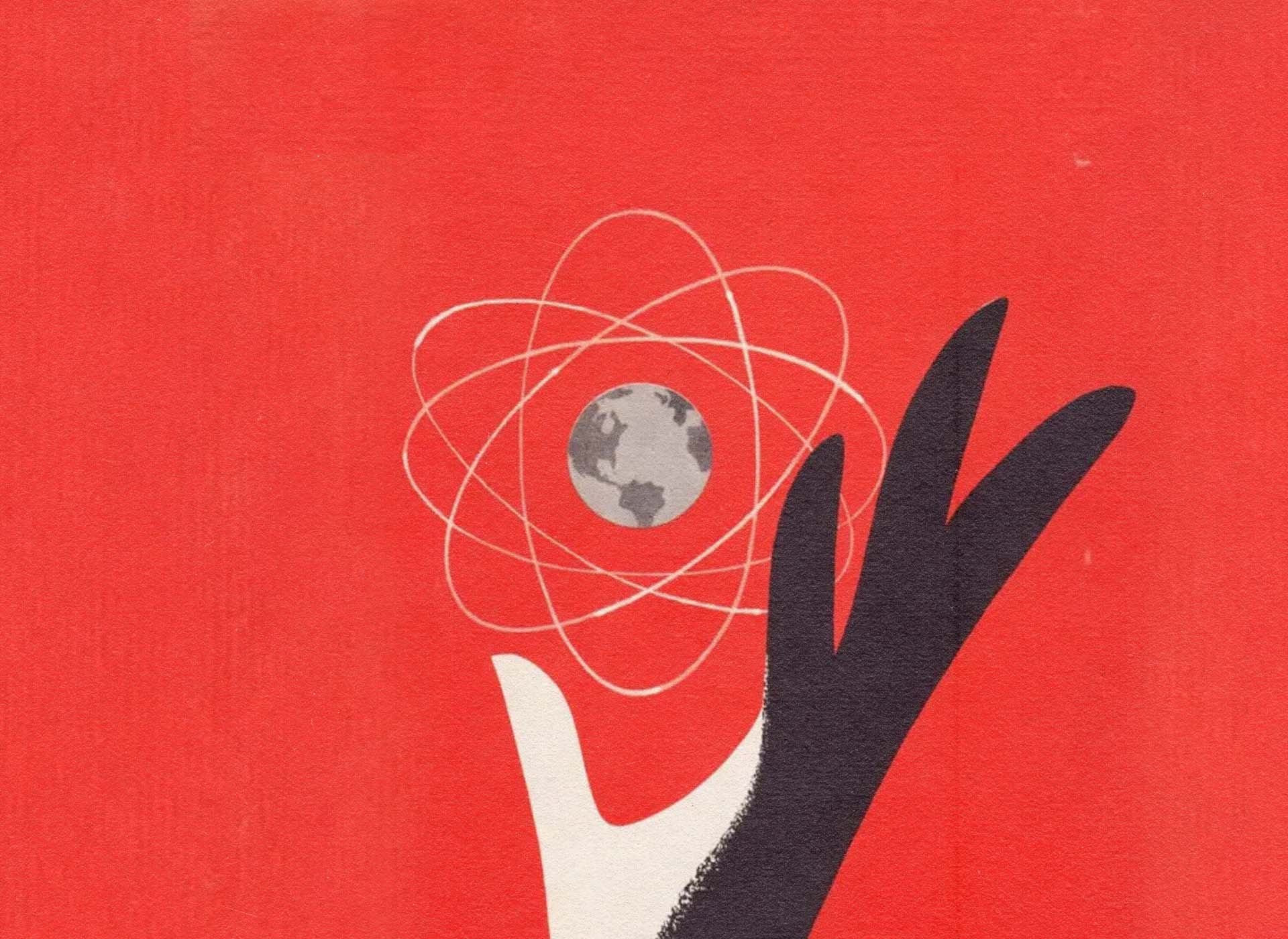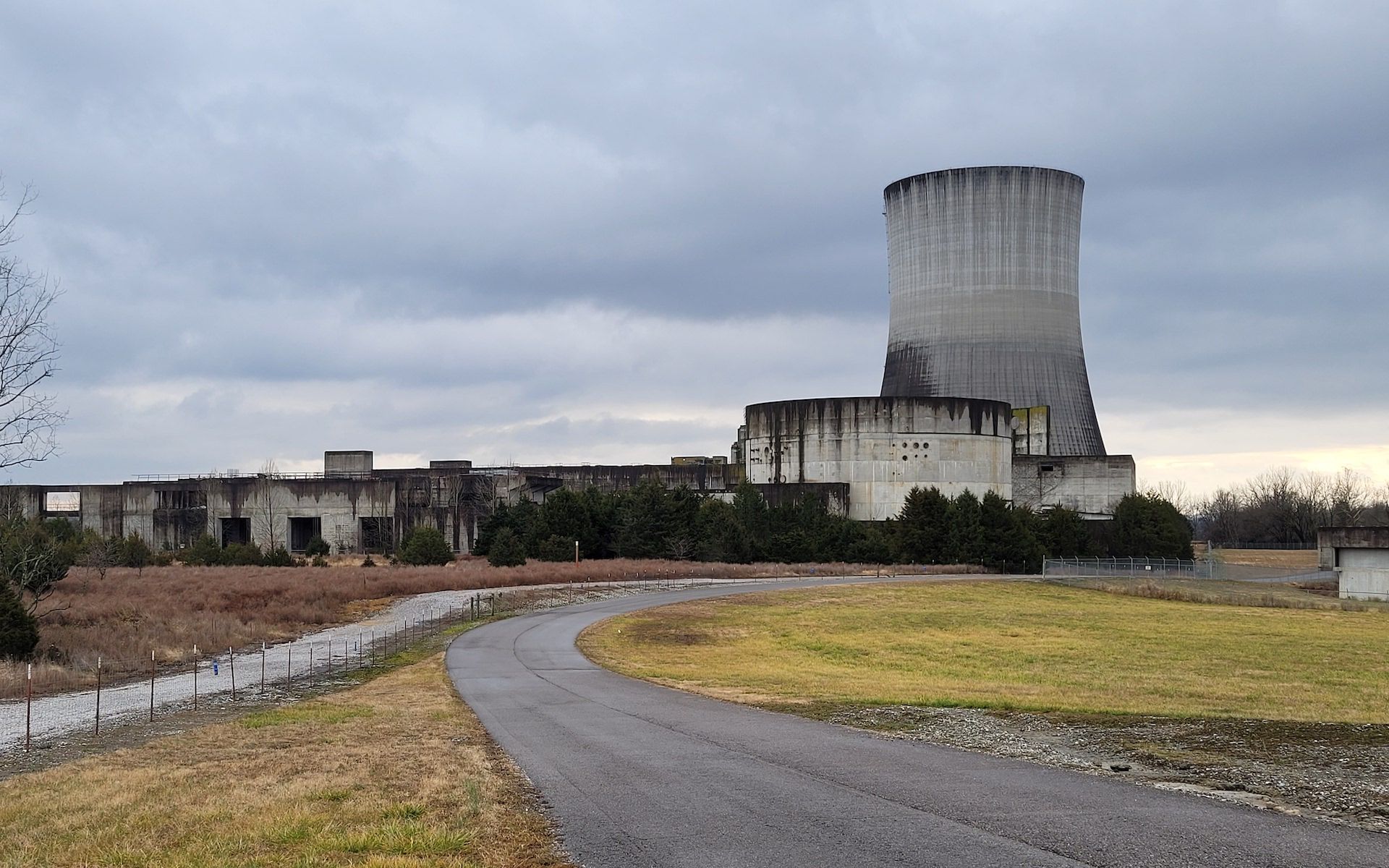
Atomic Hartsville
A small Tennessee town's forgotten history as a nuclear leader
Hartsville, Tennessee is a small town nestled in the hills overlooking the Cumberland River about an hour north of Nashville. It sits just beyond the bustling bedroom communities that encircle Davidson County. The most action you’re likely to see on the road to Hartsville is turkey buzzards making a roadside picnic out of unlucky deer on the shoulder of State Route 25. But if you look in the right place, there’s a silent giant on the hillside.
It’s the 535-foot-tall cooling tower of the abortive Hartsville Nuclear Plant. The quiet Middle Tennessee town was once party to a brilliant dream, it's now a ghost of the promise that man’s mastery of the atom would usher all of humanity into a new age of prosperity.
Today, the town stagnates under the weight of the same economic hardships that plague so many small communities in the South, but it was supposed to be different for Hartsville. The abandoned nuclear facility now sits next to the Trousdale-Turner Correctional Facility, a private prison where inmates in the yard can look up at the tower like medieval poets gazing upon Roman aqueducts, wondering just what giants wrought such wonders.
We have this notion that modern life is a constant cycle of scientific discovery and technological innovation that we must contend with, whether we like it or not. But on occasion, we’re served with a reminder that the train of progress sometimes runs off the rails. Hartsville is practically indistinguishable from countless other small towns at first glance, but at one point in time, it was at the forefront of an emerging Atomic Age. The nondescript Middle Tennessee town and its languishing nuclear plant is a tragic reminder that sometimes the future just ain’t what it used to be.

In 1953, Dwight D. Eisenhower addressed the United Nations General Assembly with an annunciation of his storied Atoms for Peace initiative. Atoms for Peace was one part propaganda, one part policy aimed at evangelizing the world with the gospel of peacetime nuclear applications. The initiative was meant as an olive branch to countries like newfound allies Japan and the Federal Republic of Germany and a challenge to nascent rivals in the Eastern Bloc.
The program stirred cultural change as companies like General Electric produced cartoons and comic books to proclaim the wonders of atomic power. Atoms for Peace produced the archetype of the Atomic Scientist, a modern spin on wizards and alchemists of yore. (This spell remains unbroken; to this day major media outlets report on eschatological adjustments to the Bulletin of Atomic Scientists infamous “Doomsday Clock” in hushed, reverent tones.)
The Atomic Mythos also came with economic enticements for regional electric corporations to buy into nuclear power. GE and Westinghouse Electric offered fixed priced “turn key” contracts where they would construct nuclear plants for electric companies who simply had to show up when the plant was completed to collect the keys to their very own nuclear reactor. This opportunity seemed like a perfect fit for the Tennessee Valley Authority; their customers’ electricity consumption had increased exponentially from 1950 to 1968, and there was no evidence to indicate the trend wouldn’t continue.
Nuclear power stations also seemed like a cleaner alternative to the 27 million pounds of coal TVA burned every year. They ordered 17 nuclear reactors. The first plant they completed was Browns Ferry in Alabama, then Sequoya and Watts Bar in Tennessee. In 1972, they began planning the largest nuclear plant the world had ever seen. They chose a site in Trousdale County, near Hartsville.

The Hartsville Nuclear Plant was to have been divided into two sites consisting of GE BWR/6 nuclear reactors, the most advanced in the world. The equipment and layout of the plant would have revolutionized the nuclear industry in terms of design and licensing. Hartsville was slated to become home to scientists, engineers, and high-paid technicians who would have lived, shopped, and raised families in the small community. The potential economic benefits an operational nuclear plant could have provided the area are incalculable.
The 1970s saw a nearly complete reversal of the economic and cultural forces behind Atoms for Peace. Richard Nixon tried to briefly rekindle the spirit of Eisenhower’s program with his Project Independence initiative, which included nuclear power as a major prong in his strategy to wean the US from dependence on foreign oil. Unfortunately, Nixon was unable to oversee the initiative after resigning in 1974.
Opposition to nuclear power was galvanized when Ralph Nader launched his anti-nuke Critical Mass Energy Project. Nader’s concerns seemed justified when the Three Mile Island plant in Pennsylvania suffered a nuclear meltdown in 1979. Suddenly opposition that consisted of locals objecting to cooling towers obstructing their view, loss of hunting land, and the arcane legal doctrine of Eminent Domain became 200,000 citizens rallying in New York City with existential fear.
While social attitudes towards nuclear energy soured, the economic viability of the atomic experiment perished completely. Plant construction costs hyperinflated in the late 70s. GE and Westinghouse could no longer afford the fixed-price contracts they made with the electric corporations. Nuclear plants that were projected to cost hundreds of millions now cost billions, and neither offeror nor offeree could foot the bill. The rising prices were a death knell for nuclear plants. US electric corporations canceled over 100 reactors by the early 1980s. The Hartsville plant was axed in 1984. Over 400 million dollars had already been spent on construction when the plant was decommissioned.

Hartsville, Tennessee has an alternate dimensional twin: Hartsville, South Carolina. This Hartsville is home to the H.B. Robinson Nuclear Generating Station, a single reactor power plant that was commissioned in 1971 and has produced 5 to 6 million megawatts per year ever since. The National Civic League named it an All-American City in 1996. The South Carolina Hartsville is home to a university, technical college, and the state Governor’s School for Science and Mathematics. Hartsville, Tennessee has a Dollar General.
Both towns have roughly the same population, give or take a couple thousand people, but extremely disparate vibes. One is a thriving community built on science and industry, the other a struggling village blanched gray by a very long run of bad luck. Both towns played a role in American History as two contrasting examples of Ike Eisenhower’s vision for a post-bomb world.
The urbane mind tends to view run-down communities like Hartsville as procedurally generated instances whose existence begins and ends when happenstance brings them through city limits. But Hartsville, Tennessee played its part in one of the main sagas of the 20th century. To this day, world leaders struggle with the same nuclear question that has challenged them ever since the world’s foremost minds detonated the Gadget at Trinity. The small Tennessee town reflects what the grand United States nuclear program promised and failed to deliver to hundreds of communities throughout the country.
Today the nuclear plant is quiet as the grave. Surely the town of Hartsville would look different had the plant’s four reactors reached criticality and provided power to the region. Since opening its doors in 2016, the private prison next door has had three fatal stabbings, three COVID deaths, and multiple cases of assaults on guards, mental health workers, and inmates alike. Trousdale-Turner’s short brutal history has firmly established it as a more dangerous place than any operational nuclear facility in US history, but at least they’re hiring.

